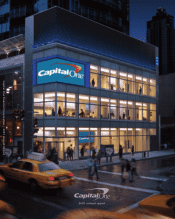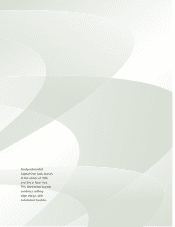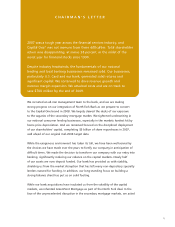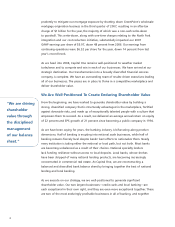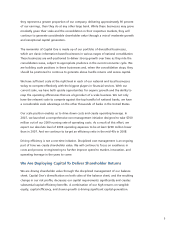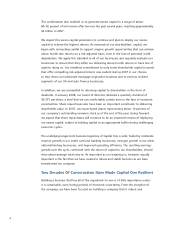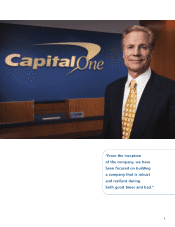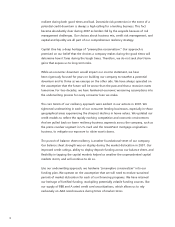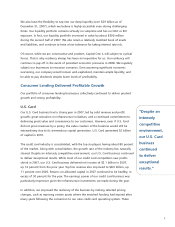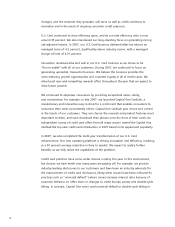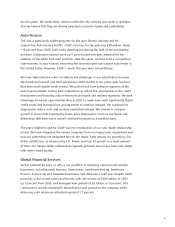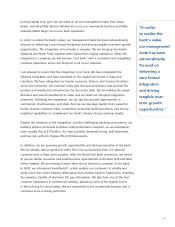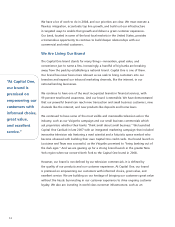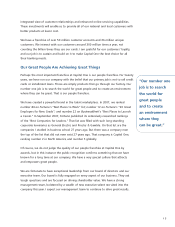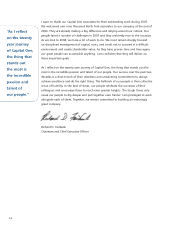Capital One 2007 Annual Report Download - page 6
Download and view the complete annual report
Please find page 6 of the 2007 Capital One annual report below. You can navigate through the pages in the report by either clicking on the pages listed below, or by using the keyword search tool below to find specific information within the annual report.
This combination also enabled us to generate excess capital in a range of about
80–90 percent of net income after tax over the past several years, reaching approximately
$2 billion in 2007.
We expect this excess capital generation to continue and plan to deploy our excess
capital to achieve the highest returns. As stewards of our shareholders’ capital, we
begin with reinvesting capital to support organic growth opportunities that can achieve
above hurdle rate returns on a risk-adjusted basis, even in the face of potential credit
degradation. We apply this standard to all of our businesses and regularly evaluate our
businesses to ensure that they either are delivering above hurdle returns or have line of
sight to doing so. Our steadfast commitment to only invest shareholder capital in assets
that offer compelling risk-adjusted returns was evident during 2007 in our choices
to shut down our wholesale mortgage origination business and to exit less resilient
segments of our UK and auto finance businesses.
In addition, we are committed to returning capital to shareholders in the form of
dividends. In January 2008, our board of directors declared a quarterly dividend of
$0.375 per share, a level that we can comfortably sustain even in the face of economic
uncertainties. Share repurchases also have been an important contributor to delivering
shareholder value. In 2007, we repurchased shares representing about 10 percent of
our company’s outstanding common stock as of the end of the year. Going forward,
we expect that share repurchases will continue to be an important means of deploying
our excess capital, subject to holding capital as an appropriate buffer during challenging
economic cycles.
The underlying longer-term business trajectory of Capital One is solid, fueled by moderate
revenue growth in our credit card and banking businesses, stronger growth in our other
national lending businesses, and improved operating efficiency. The resulting earnings
growth over the cycle, combined with the return of capital to our shareholders, should
drive above-average total returns. As important as our trajectory is, however, equally
important is the fact that we have created a robust and stable business as we have
transformed our company.
Two Decades Of Conservatism Have Made Capital One Resilient
Building a business that has all of the ingredients to win is of little importance unless
it is sustainable, even during periods of economic uncertainty. From the inception of
the company, we have been focused on building a company that is robust and
4

